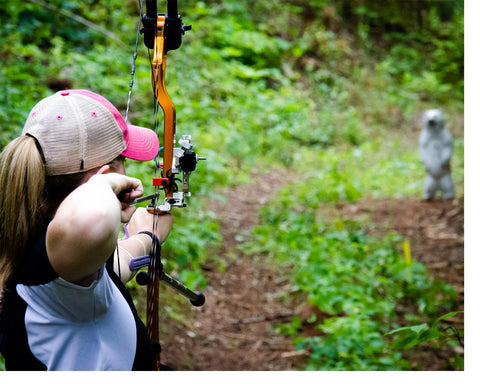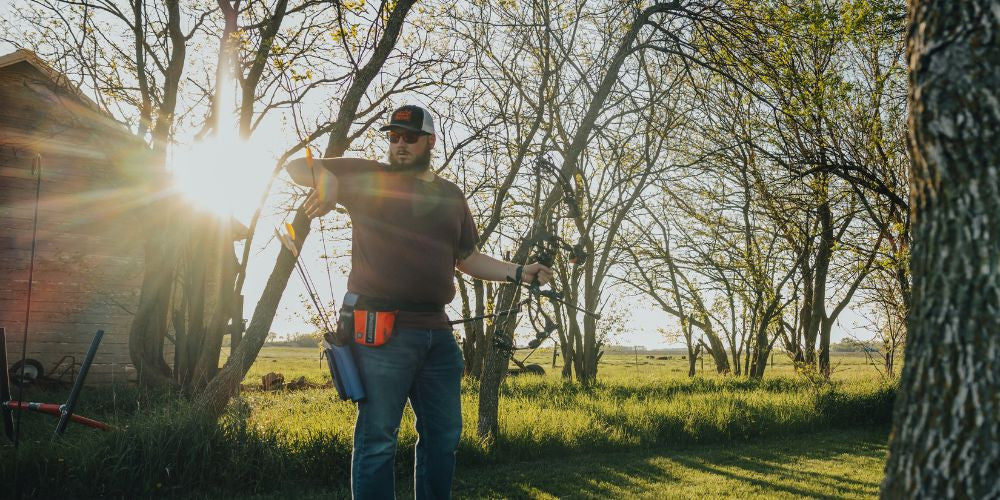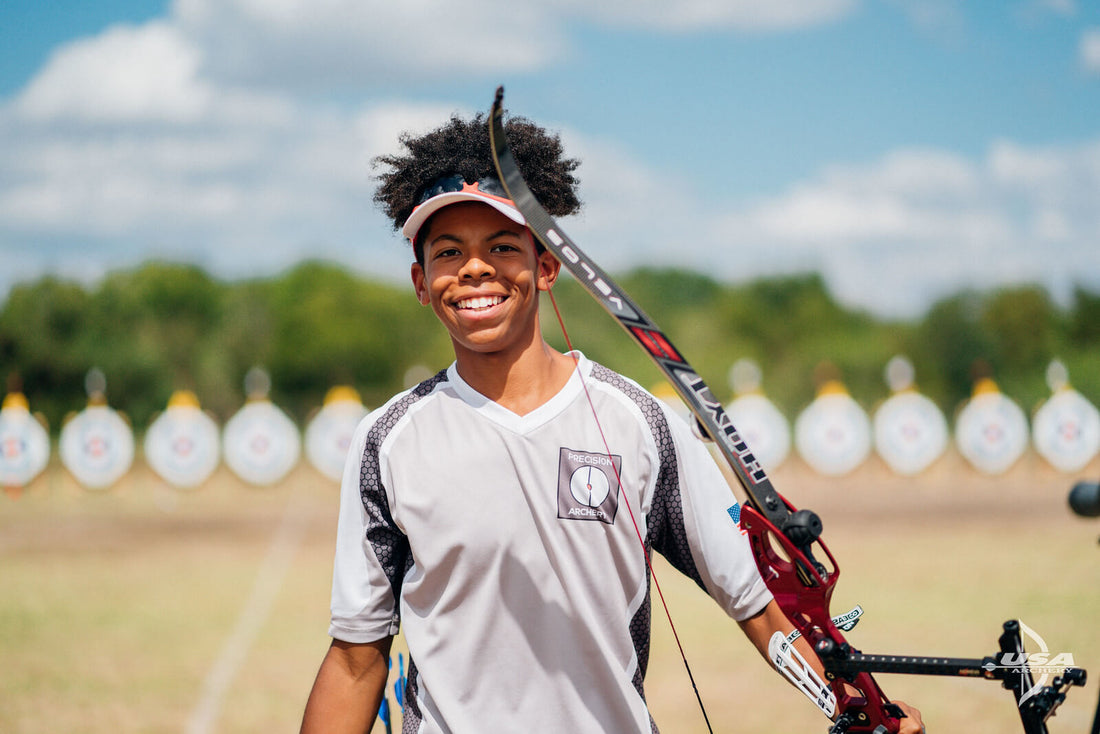The history of archery dates back thousands of years. Since then, many creative, entertaining, and professional applications have emerged. As a beginner, you might not be aware of all the different ways you can put your archery skills to use.
Here, we'll cover the several forms of archery as a sport. The most popular ones are target archery, 3D archery, field archery, and bowhunting, so we'll go over them first. After that, we’ll discuss other exotic forms of archery.
How Did Archery Become So Popular?
Indeed, archery was integral to the way of life of many ancient cultures. It was the most important tool for combat and hunting. So, how did archery become such a popular sport today? While some claim the recent uptick in archery engagement is courtesy of the "Hunger Games" franchise, others have a different opinion.
A growing number of individuals are taking up archery for a variety of reasons, including as a means of maintaining physical fitness and because it provides an opportunity to challenge oneself mentally. Many individuals also enjoy competitive events, and archery offers plenty of such events.
Whatever the reason, a quick internet search will reveal that archery of all kinds enjoys widespread respect and followership and is a source of pride for many people. Even better, archery isn't just a fun pastime; it also offers several great benefits you may not find in other sports.
The Most Common Types Of Archery
There is a wide range of archery types or styles, each of which calls for a unique set of abilities. We'll go over each archery style in detail below, so you know exactly what it entails.
Target Archery (Indoor and Outdoor)

This is the most common style, so expect to see a lot of it. Target archery can be practiced indoors or outdoors as it’s quite easy to set up an indoor or outdoor target range. It is the archery style featured in Olympic tournaments.
Shooters are tasked with firing at fixed, circular targets from predetermined ranges. Targets comprise ten rings (referred to as scoring rings) represented by the colors yellow (the central gold ring), red, blue, black, and white - in that order from the innermost to the outermost circles, with each color indicating a different score. The bullseye (central gold ring) is worth 10 points, with the score decreasing with the distance from the center ring. Archers compete at distances of up to 70m for recurve archers and 50m for compound archers; however, these can be shortened or lengthened depending on the stage and division you're shooting in.
|
Target Size
|
Shooting Distance
|
Indoor/Outdoor
|
|
40cm
|
18m
|
Indoor
|
|
60cm
|
25m
|
Indoor
|
|
80cm
|
30m, 50m
|
Outdoor
|
|
122cm
|
70m, 90m
|
Outdoor
|
Olympic Archery
Archery has been one of the games at the Olympics since it was introduced in 1900. Since then, it has come up with its own set of rules. Olympic archery is essentially target archery, with both male and female archers shooting at a 122 cm WA (FITA) target at a distance of 70 m (230 ft) away. Team events are also available.
In Olympic archery, participating archers can only use Olympic recurve bows to compete, and equipment is strictly regulated. There is no room in the Olympics for any other type of bow. They can also employ accessories like sights, clickers, and stabilizers.
Field Archery

Field archery is like target archery, except it's practiced in a more natural setting. This type of archery is often practiced along courses, pretty similar to a golf course set up in the woods or on hilly terrain, with a series of fixed targets at varying distances and altitudes.
It's different from regular target archery in that field archers often aim uphill or downhill, at unmarked distances, and under varying degrees of lightning, wind, and shadows that add extra dimensions and variables to the shot. The courses are different, and each will have a specific number of targets. The target distance, terrain, and other shot variables depend on the course. The targets used are similar to those used in target archery but may vary in size, design, and shape.
Target distances typically range from 20ft. to 80 yards, with the target sizes varying with shooting distance. For a shooting distance of 20-30ft., the target size will be 20cm, 15-30 yards; 35cm, 35-50 yards; 50cm, and for 55-80 yards; 65cm target faces. Every round has 28 targets spread across different terrains. A 14-target course can also work, but each target will have to be hit twice to complete a round.
Field archery entails standard formats - the field, hunter, and animal rounds, each with its set of rules, targets, and distances. The rules and scoring of field archery are governed by the National Field Archery Association (NFAA).
3D Archery

In 3D archery, players shoot at stationary animal-shaped foam targets, which have different score rings, and between one and three arrows are shot at each target. The courses used in 3D competitions are often similar to those used in field archery. 3D archery takes the archers through different terrains, elevations, and wind conditions, demanding that you shoot your bow according to prevailing conditions. Nonetheless, you can also play 3D archery indoors if you choose.
The idea behind this archery style is to give archers a feel of what it's like to go on a real hunt. 3D archery teaches many of the skills required while hunting in the wild, making it a great practice technique for archers interested in bowhunting.
Different 3D archery contests have different formats and sets of regulations. Since the targets themselves are so diverse, so must the scoring system. 3D targets differ from regular bullseyes in that they are marked only in specific locations on the animal's body, corresponding to the vitals of real-life animals.
Bowhunting

Bowhunting is unlike any other kind of archery since it is practiced with the intention of killing animals. It is an exciting but more challenging sport since shooting at live animals is far more difficult than shooting at fixed targets.
It's a universally popular sport with a lengthy history of engagement. However, while the sport has evolved throughout the years, its core principles have remained the same. The bowhunter tries to kill game from a certain distance using bows and arrows.
Although any bow type can be used for hunting, compound bows are a favorite among bowhunters because they make it much easier to kill wildlife from longer distances since they can fire with far greater force than traditional bows.
A number of large game, such as bears, boars, elk, and moose, are usually hunted by bowhunters, but whitetail deer is the most popular hunting game. Smaller games like rabbits, turkeys, and raccoons can also be hunted with a bow and arrow.
Bowhunting requires a wide range of shooting skills and the ability to execute different kinds of shots with precision, stealth, and speed.
Traditional Archery

Traditional archery has been practiced as a sport for many years. It's essentially archery stripped back to the basics. This type of archery doesn’t allow for any modern accessories and shooting aids such as sights or stabilizers. The only equipment allowed is a traditional bow and arrow. Longbows and flatbows can also be used. But the idea behind traditional archery is to bring shooters as close as can be to archery as it was in days of yore.
The target must be no less than 20 yards away for traditional archers to step back and fire their arrows. As with other forms of archery, the objective is to strike the target as many times as you can without missing or going outside the marked area.
Bowfishing

Bowfishing is quite similar to bowhunting, except that the targets are aquatic rather than terrestrial. It's really just a hybrid of archery and spearfishing and involves attaching a fishing reel to your compound or recurve bow and firing specialized arrows attached to the line in the fishing reel.
Ski Archery

If you love skiing and are looking to get into archery, then ski archery may be the way to go. Ski archery practically takes field archery to a very different level. It is not a very popular type of archery, but those who practice it, love it.
Essentially, archers carry a pack containing their bow and arrows on their back and ski along a course typically 5 to 7.5 miles in length. Participants in the ski archery shoot at targets mounted 18 meters away. There is no such thing as a "good" shot; either you hit, or you miss. Any archer who misses the target must ski 350 meters as a penalty before they can exit the range. Whoever gets to the finish line first wins.
Clout Archery
The goal of clout archery, like other forms of long-range archery, is not necessarily to hit a target at the farthest possible distance. Shooting your arrow as close as possible to the clout (or flag) is the objective of clout archery contests. An archer's score increases in proportion to their proximity to the clout.
Clout archery requires a sizable playing area, as the flag is typically set at far distances, and some extra room is usually allotted in case an archer overshoots the target. Shooting high is essential if you want your arrow to land near the flag, but you can't merely aim for the sky; accuracy is also crucial.
Kyudo

Kyudo, which translates to "The Way of the Bow," is a branch of Japanese martial arts that emphasizes the use of the bow. The goal of kyudo practice is to improve oneself on all levels, both physically and spiritually. It was developed from the Japanese style of archery known as kyujutsu, which was practiced by the samurai. The yumi, the traditional bow of Kyudo, is two meters long (sometimes taller than the archer) and is crafted from bamboo, wood, and leather using methods that have not changed in generations.
Flight Archery
Although flight archery is not the most widely practiced type of archery, it does have a sizable community of devoted players and passionate spectators. Since the idea behind flight archery is to have the arrow fly the farthest possible distance, you must aim high when shooting.
Most flights in competitions are performed while standing; however, a foot bow is occasionally used. Like a crossbow, the foot bow may be used to shoot targets at great distances. Archers sit and use their feet to propel the bow forward as their hands draw back on the bowstring.
Run Archery/Arcathlon

Run archery is quite similar to ski archery, except that instead of skiing, competitors sprint across a long track or course with targets placed at strategic locations as they head for the finish line. This is the sport's adaptation for places where snow is sparse, like in tropical regions.
Archers hold the bow in their hand as they run through the course, and the arrows are either worn on the back or left by the shooting line. This form of archery combines the complexity of field archery with the physical requirements of finishing a race.
Similar to ski archery, it doesn't really matter where the arrow hits the target. The archer just needs to make sure they don’t miss it. For each miss, the archer will be required to complete a penalty loop. The participant who gets to the finish line first wins.
Mounted Archery

Mounted archery, often known as horseback archery, is the practice of firing arrows from a moving horse. As you would expect, this calls for formidable horseback riding and shooting skills, not to mention very well-trained horses.
For mounted archery tournaments, a designated course is laid up for the horse and rider to follow. It takes place on relatively level ground, and the archer has 3-5 targets to shoot at as he rides past them. Participants in mounted archery are evaluated not only on their shot precision but also on their time to finish the course.
 cust@legendarchery.com
cust@legendarchery.com 302 503 5767
302 503 5767 Sauk Village IL 60411
Sauk Village IL 60411


